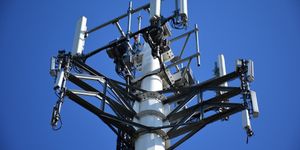Research Confirms Climate Change to Blame for Hurricane Maria's Record Rainfall
When Hurricane Maria hit the island of Puerto Rico in September of 2017, it brought along record-breaking rainfall, the consequences of which caused widespread devastation to the island. By the time the storm hit land it was estimated to be near the strength of a Category 4 hurricane, the island’s strongest to make landfall since 1928 with the largest rain single rain event since 1956. Many assumed climate change was to blame for the extreme rainfall, and recent research confirms this assumption. The study, published last week in Geophysical Research Letters, aimed to determine whether natural climate variability or anthropogenic climate change caused the immense amount of precipitation.
The tropical island of Puerto Rico is no stranger to rain, as it receives 3,000-4,000 mm of rainfall annually. However, as reported in the study, Hurricane Maria dumped 1,029 mm of precipitation on the island in a single day—nearly 25% of the total average annual rainfall. Maria was also estimated to have 66% more precipitation than the last major storm to make landfall on Puerto Rico—Hurricane Georges in 1998.

In a statement released by the American Geophysical Union (which publishes Geophysical Research Letters), lead author and geographer at the University of Alabama David Keellings stated, “What we found was that Maria’s magnitude of peak precipitation is much more likely in the climate of 2017 when it happened versus the beginning of the record in 1956.”
To reach this conclusion, Keellings and co-author Jose Javier Hernandez Ayala—Puerto Rican climate researcher at Sonoma State University—analyzed rainfall from the 129 hurricanes that have hit Puerto Rico since 1956. They determined that an event as extreme as Hurricane Maria was 4.85 times more likely happen in the climate of 2017 than 1956, a change in probability that can only be attributed by human-induced warming. Their data analysis showed that in the 1950s, a storm of Maria’s intensity was likely to occur once every 300 years. In 2017, that likelihood dramatically shifted to once every 100 years.
This study indeed confirms that human-caused warming is increasing the frequency of extreme weather events. In AGU’s statement, Keellings affirms that “Some things that are changing over the long-term are associated with climate change—like the atmosphere getting warmer, sea surface temperatures increasing, and more moisture being available in the atmosphere—together they make something like Maria more likely in terms of its magnitude of precipitation.”
Sources: Geophysical Research Letters, AGU, PHYS, NOAA (Images)








